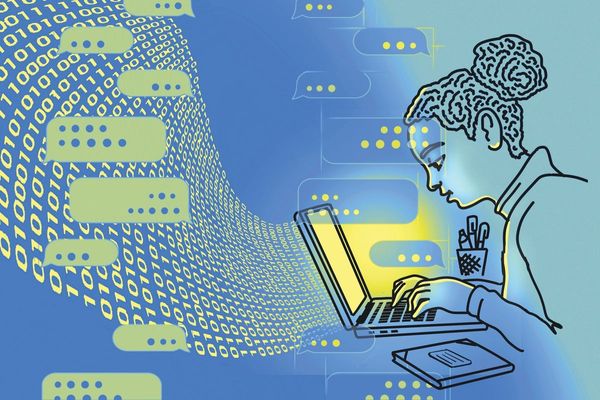
The humble stitch plays a crucial role in surgery, holding a gash together while tissues repair. Now scientists have created a type of suture they say can help speed up wound healing and reduce the risk of infection.
Researchers in China have created a suture that when put under strain – as occurs during movement – electrically stimulates the wound.
Dr Chengyi Hou, a co-author of the research from Donghua University, said: “This electrical stimulation suture is a fully biodegradable and self-electrified material. It helps wound healing without any additional approaches, [such as] using external electric devices.”
Electrical stimulation is known to promote wound healing through a number of mechanisms, including by boosting migration of cells to the area.
Writing in the journal Nature Communications the team reports how the new sutures are made from a core filament of magnesium that is wrapped in a biodegradable polymer. This is contained inside a sheath made of another biodegradable material.
The team carried out a series of experiments with the suture, involving artificial muscle fibres, and rats with wounds.
The results reveal that when the sutures are stretched and the core moves within the sheath, its components become electrically charged – this is the same process that occurs when a balloon is rubbed on hair, for example.
“The suture generates electricity by creating opposite charges on the suture’s middle and outer shell when muscles relax and contract, based on the triboelectric effect,” Hou said. “This generates an electric field at the wound site to accelerate wound healing.”
While movement can strain and hinder how well traditional stitches work, it can be a benefit for the new sutures.
Through experiments in a petri dish, the team found the rates at which cells migrated to the area around the sutures, and proliferated, increased when an electrical field was present compared with when it was not, while electrical stimulation also reduced bacterial growth.
The researchers also carried out experiments in rats and found that cuts in their muscles that were held together with the new sutures healed faster than those stitched with ordinary bioabsorbable sutures, and had fewer bacteria – something the team notes is important in reducing the risk of postoperative infections.
After 10 days the wounds were almost completely healed – in contrast with when no sutures or other types of bioabsorbable suture were used. “Tests on rats show that this suture can help wounds heal faster by almost 50%, by creating electric field through the object’s natural movements,” Hou said.
The team is conducting clinical trials to test the sutures in humans, adding that the new type of suture has a similar cost to commercial absorbable sutures.
Dr Karen Wright of Lancaster University, who was not involved in the work, said the novelty of the new sutures was that a charge was generated by movement.
“In this way, the benefits are twofold, since there isn’t a need for external electrical application or battery-operated systems and the material is degradable in situ,” she said.







